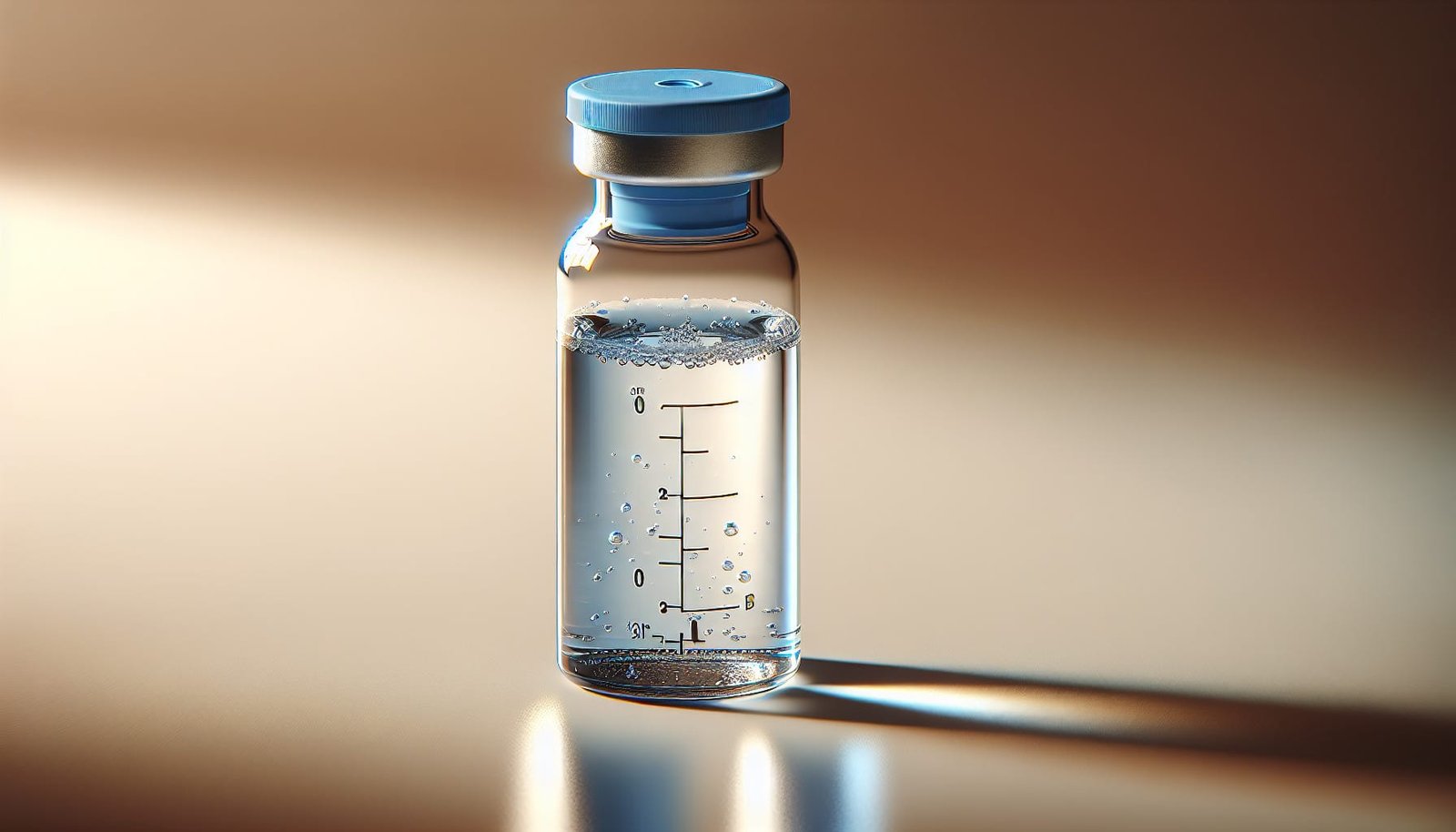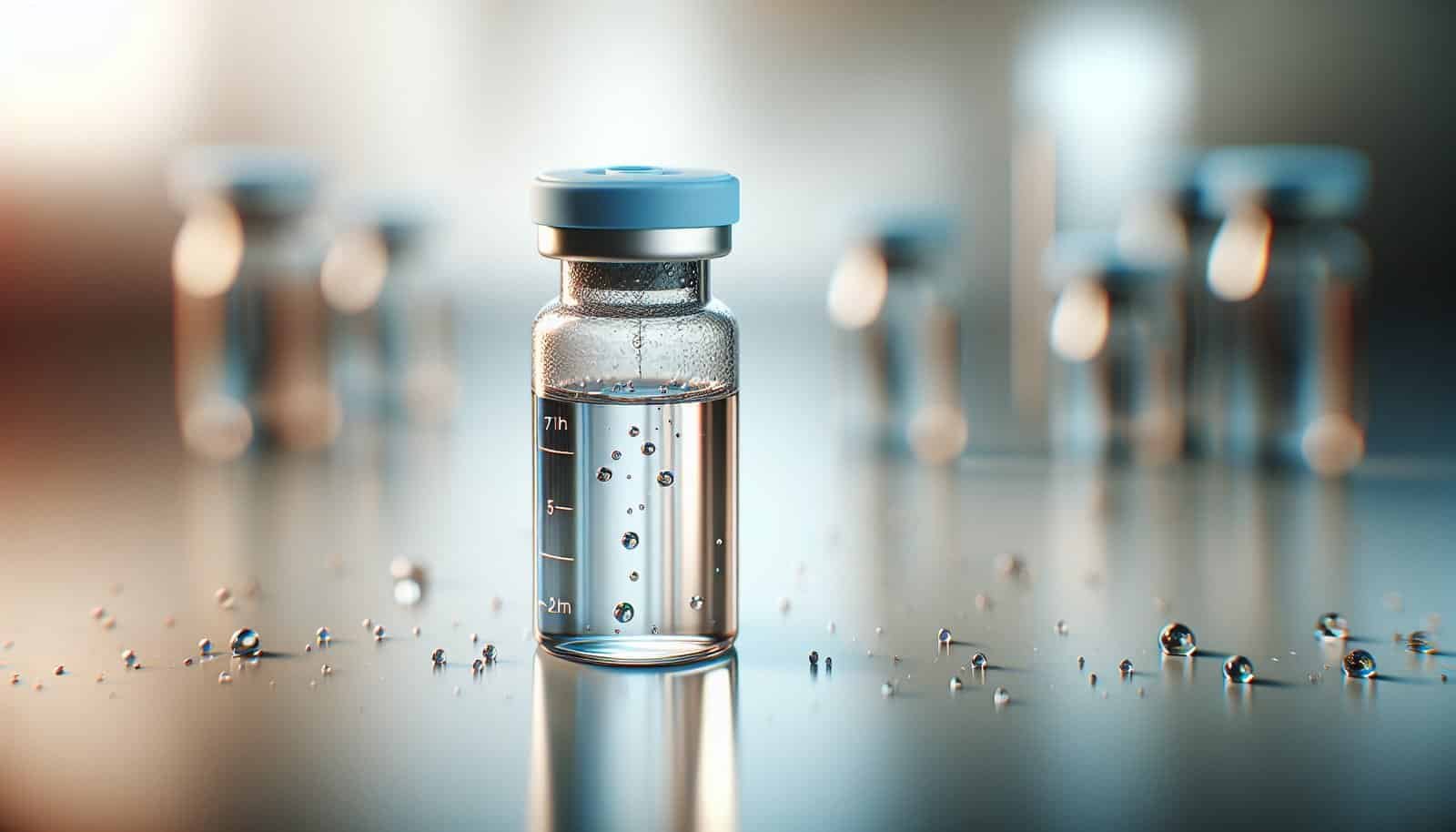Are you concerned that your well water might contain harmful bacteria and want a clear, step-by-step way to find out?
How Do I Test My Well Water For Bacteria?
Testing your well water for bacteria is a practical step to protect your health and your household. This guide walks you through why testing matters, how to collect a proper sample, the testing options available, how to interpret results, and what to do if bacteria are detected.
Why You Should Test Your Well Water
You should test your well water because untreated wells can be vulnerable to contamination from surface water, septic systems, livestock, or natural sources. Regular testing helps you catch problems early, protect your family from waterborne illnesses, and maintain confidence in your water supply.

When to Test Your Well Water
Test your well water at least once a year for total coliforms and E. coli. You should also test after events that can increase contamination risk, such as heavy rains, flooding, well repair or construction, or noticeable changes in water taste, odor, or appearance.
Common Types of Bacteria Tested
Understanding the bacteria the tests look for will help you interpret results. The main targets are indicators rather than all possible pathogens.
Total Coliform Bacteria
Total coliforms are a broad group of bacteria commonly found in the environment. Their presence suggests pathways exist for contamination, though they aren’t usually the direct cause of severe illness.
Escherichia coli (E. coli)
E. coli is a subset of coliforms and a stronger indicator of fecal contamination. Presence of E. coli suggests recent contamination by human or animal waste and a higher risk of pathogens.
Heterotrophic Plate Count (HPC)
HPC measures the general number of bacteria that grow under specified conditions. It’s not a direct health indicator but can show changes in water quality or treatment effectiveness.

Health Risks Associated with Bacterial Contamination
If your well is contaminated with pathogenic bacteria, you could experience gastrointestinal illness (nausea, vomiting, diarrhea), and in vulnerable people — infants, elderly, immunocompromised — infections can be more severe. Testing helps you identify and address contamination before it causes harm.
Options for Testing Your Well Water
You have several reliable options: certified laboratory testing, home testing kits, or using local health department services. Each option has pros and cons.
Certified Laboratory Testing (Recommended)
A certified lab provides the most reliable results and uses accredited methods. Labs test for total coliforms and E. coli, often following state or EPA standards.
Pros:
- Accurate and legally recognized results
- Proper sample handling and chain-of-custody for real estate or regulatory needs
Cons:
- Cost (varies by lab)
- Requires correct sampling and timely delivery
Home Testing Kits
Home kits can give quick, on-the-spot results. Some detect total coliforms and E. coli, while others rely on color changes or dip slides.
Pros:
- Fast results, convenient
- Good for frequent screening
Cons:
- Less accurate than labs
- Higher chance of user error and false positives/negatives
Local Health Department Testing
Many county or state health departments offer testing or can direct you to accredited labs. Some provide free or low-cost tests for specific contaminants.
Pros:
- Cost-effective
- Local expertise and guidance
Cons:
- May be limited in testing scope or availability

How to Choose Between Lab and Home Testing
Use the table below to compare testing options and decide what fits your needs.
| Factor | Certified Lab | Home Test Kit | Health Department |
|---|---|---|---|
| Accuracy | High | Moderate to low | Moderate to high (varies) |
| Cost | Moderate to high | Low to moderate | Often low or free |
| Turnaround time | 1–3 days | Minutes to 48 hours | Days to weeks |
| Best use | Official results, problem confirmation | Quick screening between lab tests | Community support, guidance |
| Sample handling required | Yes | Minimal | Yes (sometimes) |
How to Collect a Proper Water Sample
Collecting the sample properly is critical. A contaminated sample can produce misleading results. Follow these detailed steps to avoid common mistakes.
Materials You’ll Need
You’ll need a sterile sample bottle (provided by the lab or health department), disposable gloves, clean cloth or paper towels, a screwdriver or wrench for faucet aerators, and a cooler with ice packs if required.
Step-by-Step Sampling Instructions
- Obtain a sterile bottle from the testing lab or health department. Do not use bottled water containers or previously used jars.
- Check labeling: write your name, address, date, and time on the bottle or provided form.
- Choose the sampling point: a faucet closest to the well (cold water), not a hose or water softener outlet. Avoid faucets with filters, aerators, or sprayers unless specifically instructed.
- Clean the faucet: remove aerator or screen, and scrub with a clean cloth. Turn the faucet on full to flush for 1–2 minutes to clear stagnant water.
- Reduce flow: turn water to a gentle flow that won’t splash and contaminate the bottle.
- Do not touch the inside of the bottle, cap, or rim. Fill the bottle to the indicated level.
- Replace the cap tightly and keep the sample cold (on ice) and deliver to the lab as soon as possible — typically within 6–24 hours depending on instructions.
- Complete any chain-of-custody or forms requested by the lab.
Common Sampling Mistakes to Avoid
- Using non-sterile containers
- Touching the inside of the cap or bottle
- Filling from a hot water tap or from a point after treatment devices
- Delaying delivery to the lab (bacteria can multiply or die off)

How Labs Test for Bacteria
Labs use standardized methods to detect and quantify bacteria. Common methods include membrane filtration and multiple-tube fermentation.
Membrane Filtration
Water is passed through a filter that traps bacteria. The filter is placed on a selective growth medium and incubated. Colonies that grow are counted and reported as colony-forming units (CFU) per 100 mL.
Multiple-Tube Fermentation (Most Probable Number – MPN)
This method uses broth cultures with serial dilutions to estimate the probability of bacteria presence. Results are reported as MPN per 100 mL.
Rapid Test Methods
Some labs use enzyme substrate tests that change color in the presence of target bacteria, providing faster results. These rapid methods are commonly used for E. coli detection.
Interpreting Your Test Results
Understanding results will help you decide on corrective actions. Labs usually report presence/absence and/or counts per 100 mL.
Typical Result Formats
- Presence/Absence (P/A): Indicates whether bacteria were detected.
- CFU/100 mL: Numeric measure from membrane filtration.
- MPN/100 mL: Numeric estimate from dilution series.
How to Read Common Results
- No coliforms detected: This is the ideal outcome; no bacterial contamination was found.
- Total coliforms detected, E. coli not detected: Indicates possible contamination pathways; investigate and retest.
- E. coli detected: Consider this a serious result — stop using the water for drinking and cooking until treated and follow corrective action steps.
Use the table below to match results with recommended immediate actions.
| Result | What It Means | Immediate Action |
|---|---|---|
| No coliforms detected | Water meets standard for bacterial safety | Maintain testing schedule |
| Total coliforms present, E. coli absent | Possible environmental contamination | Retest; check well integrity and sanitation |
| E. coli detected | Fecal contamination likely | Stop drinking; use bottled/boiled water; disinfect well |

What to Do If Your Test Is Positive
If tests show total coliforms or E. coli, take immediate and longer-term actions to protect health and address the source.
Immediate Steps
- Do not drink, brush teeth, or prepare food with the water until treated. Boil water for at least one minute (3 minutes at altitudes above 6,562 ft / 2,000 m) as a temporary measure, or use bottled water.
- Avoid using water for ice, baby formula, or food that won’t be cooked.
- Use water for hygiene only if you can avoid swallowing it. Otherwise, use bottled water.
Disinfection Options
Several treatment options can clear bacterial contamination. Choose based on your situation, budget, and whether contamination is a one-time event or recurring.
Shock Chlorination (Disinfection)
One-time shock chlorination can eliminate bacteria in the well and plumbing. It’s often performed after a contamination event or well repair.
- Procedure typically involves adding a measured amount of household bleach (no fragrances or additives) to the well, circulating chlorinated water through the system, and letting it sit for a period (usually 12–24 hours) before flushing.
- After treatment, you must test to confirm bacteria are gone.
- Shock chlorination is effective for many bacterial issues but may not fix structural sources of contamination.
Continuous Disinfection (Chlorination Systems)
If contamination recurs or persistent contamination exists, consider installing a continuous chlorination system with appropriate contact time and a retention tank to maintain residual disinfectant.
UV Disinfection
A properly sized ultraviolet system can inactivate bacteria and many pathogens. UV is effective if water is clear and free of turbidity and disinfectant demand; it does not provide residual protection against recontamination downstream.
Filtration Plus Disinfection
Combining physical filtration (e.g., sediment or multimedia filters) with disinfection can improve results, especially in water with high turbidity.
Long-Term Corrective Actions
- Inspect and repair the well structure (well cap, casing, sanitary seal).
- Ensure the wellhead is graded so surface water drains away from it.
- Move livestock, septic systems, or manure storage away from the well if feasible.
- Consider well reconstruction or deepening if the aquifer is compromised.
Shock Chlorination: A Practical Overview
If you choose shock chlorination, either perform it carefully yourself using local guidance or hire a water professional. The following table outlines a general process — verify local recommendations and consider hiring a licensed well contractor for best results.
| Step | Key Actions |
|---|---|
| Prepare | Calculate bleach volume based on well depth and diameter; get unscented household bleach |
| Add bleach | Add bleach to well, pour slowly; avoid splashing |
| Circulate | Run all faucets until chlorine odor appears, then close and let sit |
| Contact time | Let system stand typically 12–24 hours |
| Flush system | Aerate and flush until chlorine is gone |
| Test | Collect samples for lab testing 7–10 days after chlorination |
Retesting After Treatment
After disinfection, retest within 1–2 weeks to confirm elimination of bacteria. If labs still find contamination, repeat treatment or consult a professional to investigate sources and alternative treatments.
Preventive Maintenance to Reduce Contamination Risk
Regular maintenance helps you keep your well safe. Schedule checks and simple upkeep tasks.
Annual Tasks
- Test for total coliforms and E. coli annually.
- Inspect well cap and casing for damage or openings.
- Check pump and pressure tank operation for leaks or backflow.
After Major Events
- Test after heavy rains, flooding, or septic issues.
- Test if you notice changes in water quality (cloudiness, odor, taste).
Well Siting and Landscaping
- Ensure the area around the well slopes away to prevent surface water pooling.
- Maintain a minimum distance from septic systems, livestock, fuel tanks, and chemical storage.
Costs and Timeframes
Costs vary by region and service. Expect:
- Home test kits: $10–$50.
- Certified lab tests: $20–$150 depending on number of parameters.
- Shock chlorination (DIY): cost of bleach, minimal; professional service: $100–$400.
- Continuous disinfection or UV system: $500–$3,000 depending on system size and installation.
Turnaround time for lab results is typically 24–72 hours. Rapid tests may give results in minutes to a day.
Choosing a Certified Laboratory
Select a lab accredited by your state or by national standards. Ask:
- Are you certified for drinking water bacteriological analyses?
- What sampling containers and holding times do you require?
- How are results reported and what do they mean?
- Can you provide chain-of-custody documentation if needed?
Your local health department can provide a list of approved labs.
Special Situations
Certain circumstances require targeted guidance.
Real Estate Transactions
If you’re buying or selling a property, tests may be required as part of the transaction. Labs often provide chain-of-custody forms and certified results accepted by lenders and regulators.
Private Events (Septic Failures, Flooding)
If your well is in an area that has been flooded or your septic system failed, treat all water as contaminated and test after corrective measures.
Wells with Water Treatment Devices
If your plumbing includes filters, softeners, or other devices, take samples both before and after treatment to assess device performance and contamination sources.
Frequently Asked Questions
How often should I test my well for bacteria?
Test at least once a year. Test more frequently if you have a history of bacterial contamination, after storms or flooding, or after well maintenance.
Can I drink the water after shock chlorination?
Only drink after laboratory testing confirms bacteria are absent and chlorine has been adequately flushed, or follow guidance from your water professional or health department.
Will boiling my water make it safe?
Boiling water for at least one minute (three minutes at high altitude) kills bacteria and viruses and is effective as a short-term emergency measure.
Are home test kits reliable?
They can be useful for preliminary checks, but certified lab results are more accurate and necessary for legal, medical, or regulatory purposes.
What if only total coliforms are present but E. coli is absent?
Investigate and address sanitary issues. Retest after corrective actions. While E. coli is a more serious indicator, total coliforms can still represent risk or pathway for pathogens.
Sample Collection Quick Reference Table
| Action | Do | Don’t |
|---|---|---|
| Container | Use sterile bottle from lab | Use reused jars or bottled water bottles |
| Faucet | Use cold-water tap, remove aerators | Sample after water softener or filter |
| Flow | Flush for 1–2 minutes, fill gently | Splash or overfill bottle |
| Timing | Deliver to lab within recommended holding time | Leave sample at room temp for long periods |
Record Keeping and Follow-Up
Keep copies of all test results, treatment records, and maintenance logs. This history helps you track trends and provides documentation for real estate transactions or regulatory inquiries.
Resources and Contacts
Contact your state or county health department for local guidelines and lists of certified labs. The U.S. Environmental Protection Agency (EPA) and state water offices provide resources on private well safety and treatment options.
Final Checklist: What You Need to Do Now
- Test your well annually for total coliforms and E. coli.
- Use a certified lab for official or confirmatory testing.
- Follow strict sampling procedures to avoid false results.
- Take immediate precautions (boil or use bottled water) if E. coli is detected.
- Consider shock chlorination for short-term disinfection and evaluate long-term corrective measures if contamination recurs.
- Keep records and consult local health authorities or licensed well professionals when needed.
If you follow these steps, you’ll be equipped to test your well water responsibly, interpret results accurately, and take effective action to protect your household from bacterial contamination.
